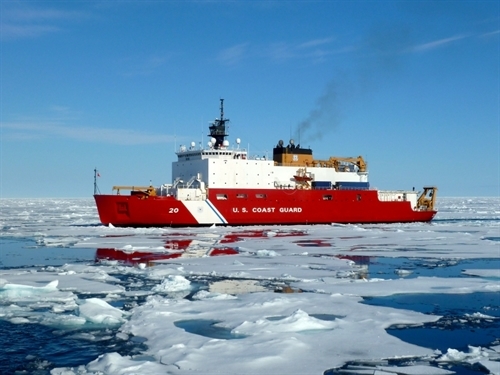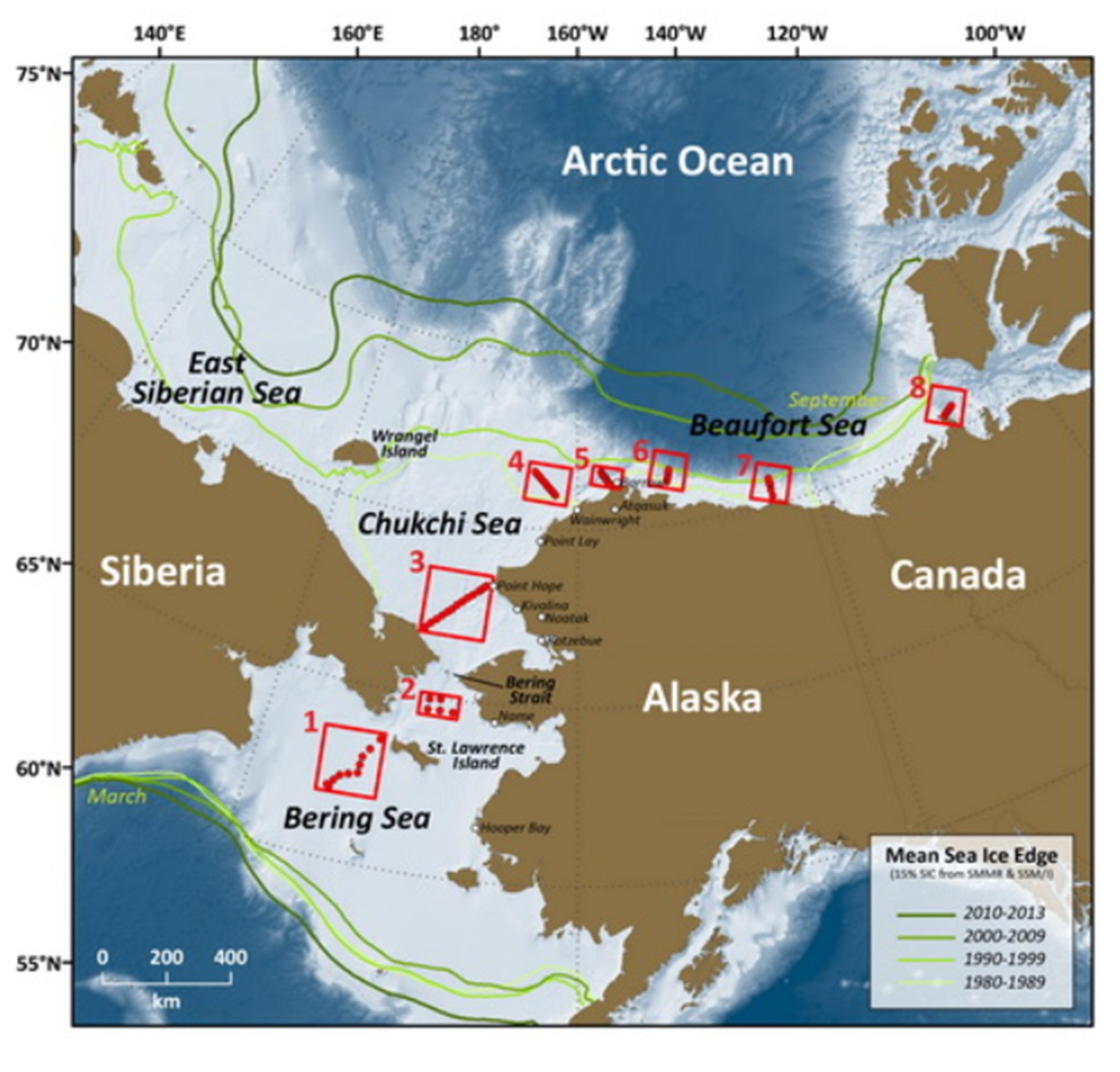DBO
Distributed Biological Observatory
The Distributed Biological Observatory (DBO) was envisioned as a change detection array along a latitudinal gradient extending from the northern Bering Sea into the Chukchi and Beaufort Seas. The DBO is an international effort spanning seven countries, including Canada, China, Japan, the Republic of Korea, Russia, Sweden, the United States, and many agencies within those countries. Sampling for the DBO is focused on transects centered on locations of high productivity, biodiversity and rates of biological change. The DBO sampling framework was initially tested during the successful 2010 Pilot Study, which consisted of international ship occupations of two of the DBO sites, one in the SE Chukchi Sea and one across upper Barrow Canyon. Provisional results of the 2010 Pilot Study were the central topic at the December 2010 Pacific Arctic Group (PAG) meeting in Tokyo, Japan, and at the March 2011 DBO workshop in Seoul, Korea. Approximately 90 people attended the one-day DBO workshop in Seoul, including invited speakers who presented ideas for efforts to expand the DBO concept to the Eastern Arctic. In addition, provisional data sets were presented and planning efforts for the 2011 Pilot Study were initiated.
Notably, several U.S. agencies have endorsed the DBO concept in the Arctic research planning documents, including: (1) the 2010 National Oceanic and Atmospheric Administration (NOAA) Arctic Strategic Plan, (2) aspects in the Bureau of Ocean Energy, Management, Regulation and. Enforcement (BOEMRE) Alaska Region planning efforts in the Chukchi Sea (COMIDA-Hanna Shoal), (3) statements in the recent U.S. Geological Survey (USGS) Science “Needs to Inform Decisions on Outer Continental Shelf Energy Development in the Chukchi and Beaufort Seas Alaska” document, and (4) interest by the Shell-ConocoPhillips-StatOil environmental. Perhaps most importantly, the DBO is specifically included in the draft U.S. National Ocean Policy Strategic Plan. In addition, the Marine Working Group of the International Arctic Science Committee (IASC) has endorsed the DBO, is supporting similar activities in the Atlantic sector of the Arctic including the Canadian Beaufort Sea, Baffin Bay, in waters near Svalbard, and possibly in the Laptev Sea through German-Russian cooperative programs. Also, the IASC- Scientific Committee on Antarctic Research (SCAR) bipolar action group for the Arctic and Antarctic recently identified the DBO concept of latitudinal transects and stations as a possible mode for biological observations in the Antarctic, too.

Scientific Objectives:
The U.S. Interagency Arctic Research Policy Committee (IARPC), comprised of representatives from 13 Federal agencies, developed a five-year plan (2013-2017) focused on seven research themes, with further development of the DBO included under the first theme: Sea ice and Marine Ecosystems. Under this research theme, work will be done to strengthen the DBO and put it on a path to sustainability and product delivery. In particular, effort will be placed on the following activities: (1) Forming science teams to coordinate observations and data management; (2) Developing an effective data management protocol; (3) Identifying opportunities for integrated data analysis and synthesis; and (4) Disseminating results of DBO activities and products.
The DBO is now focused on bringing together data from 2010-2014 sampling efforts, to demonstrate the value-added of this national and international, sampling shared-data approach to the investigation of biological responses to a rapidly changing Arctic marine ecosystem. Expanding from the Pacific Arctic sector, the DBO will also serve as a framework for international research coordination via the Arctic Council Circumpolar Biodiversity Monitoring Program (CBMP), and is recognized as a task of the pan-arctic Sustaining Arctic Observing Network (SAON) program.

Through development of a broad scale ocean observatory, the DBO team aims to provide a long-term biologically-focused scientific foundation to understand how the ecosystem of the Pacific Arctic is changing as water temperatures warm, sea ice declines, and the biological system adjusts to the "new" Arctic. It is also expected that these data should improve the ability of resource management and mission-oriented agencies (e.g., BOEMRE and NOAA) to fine-tune or adjust actions that impact marine resources, local communities, and biological systems. Ultimately, this research therefore contributes to improved conservation, protection, and management of Arctic coastal and ocean resources.
NOTE - The NCAR/Earth Observing Laboratory is no longer accepting submissions to the DBO project. Data submissions and metadata for the DBO should be directed to the Arctic Data Center at https://arcticdata.io
Further information and details on the DBO can be found at: